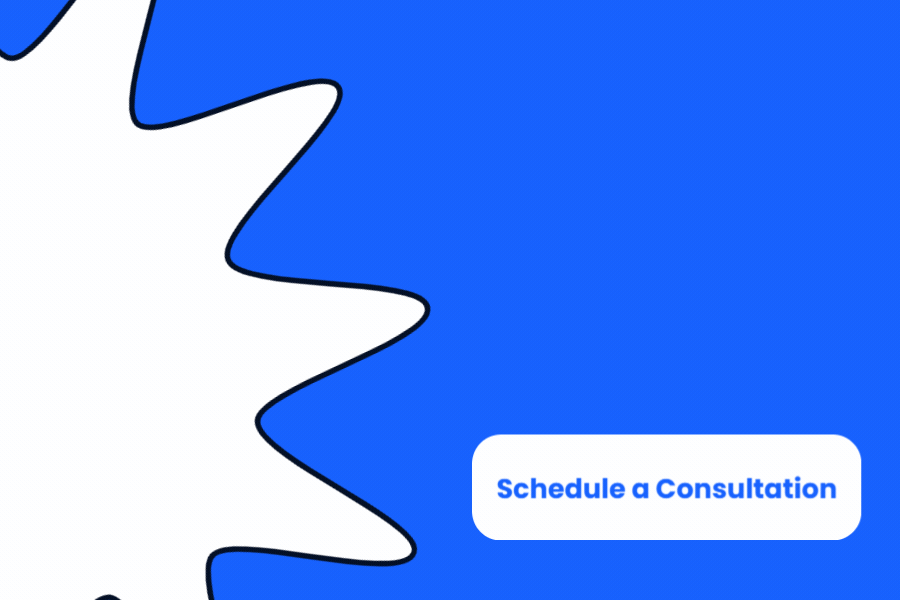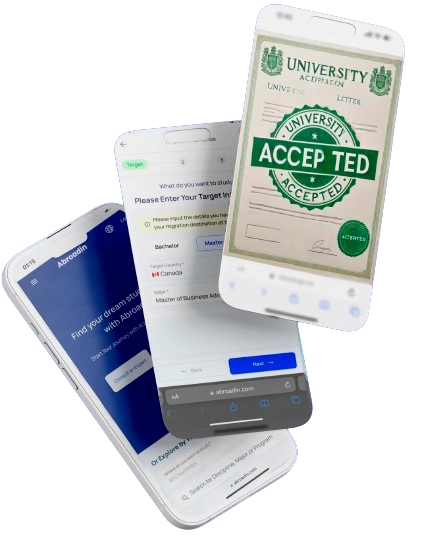

Is It Possible to Get into AI Without a Degree?
The AI industry is growing at an unprecedented pace. It is creating a surge in demand for skilled professionals.
Today companies prioritize practical abilities over traditional degrees. This approach levels the playing field for diverse applicants.
Roles like data scientist, machine learning engineer, and AI product manager are open to those who demonstrate real-world competence.
For international students, this shift means global opportunities in tech hubs like the US, Canada, or Singapore.
Insights from industry sources show that self-taught individuals with strong portfolios can compete with degree holders. Your determination and strategic learning can pave the way to success.
So it is possible to break into AI without a degree, but it needs some characteristics and abilities. The following seven steps help you in this route to get to the destination.
Step 1: Learn Essential Skills for AI
The first step to entering AI without a degree is building a foundation with key technical skills.
Programming, mathematics, and familiarity with AI tools are critical for most roles. These skills are accessible through self-study.
If you stay dedicated in this step you can gain the expertise most employers seek. Start small, but aim for consistent progress.
These are the most basic skills you should learn to get into the AI field:
- Python is the cornerstone of AI development due to its versatility in machine learning and data analysis.
- R and SQL are also valuable for handling datasets and statistical modeling.
- Tools like TensorFlow and PyTorch power AI projects, from neural networks to predictive models.
- Free platforms like Codecademy or freeCodeCamp offer beginner-friendly tutorials to build coding fluency.
Remember to practice daily by writing simple scripts or analyzing small datasets. This hands-on approach makes you job-ready faster.
Step 2: Use Online AI Learning
Online education has revolutionized access to AI knowledge, especially for international students.
Platforms like Coursera, edX, and Udacity provide affordable, high-quality courses for various skill levels. We have already many articles and guides in the Abroadin blog for these platforms:
- Top Online Courses to Kickstart Your International Education (Read it here)
- Free Education for African Students | Tips and Solutions (Read it here)
Many platforms offer financial aid for students on tight budgets. Start with foundational courses and progress to specialized ones:
- Begin with beginner-friendly courses like AI For Everyone on Coursera.
- For hands-on skills, try Udacity’s AI Programming with Python or,
- Try Stanford’s Machine Learning course on Coursera.
Certifications like Google’s Professional Machine Learning Engineer or AWS Certified Machine Learning Specialty add credibility to your resume.
These credentials show you’re serious about AI without a degree to potential employers. You may also explore financial aid options to make learning more accessible.
Step 3: Build a Portfolio to Stand Out in AI Field
A compelling portfolio shows your ability to apply AI skills practically to employers. They value projects that demonstrate problem-solving over academic credentials.
A strong portfolio bridge the gap to global opportunities for international students. So you may create work that reflects your target role, whether it’s data analysis or machine learning.
These are some suggestions to build an even stronger portfolio:
- Develop projects like a chatbot, image classifier, or predictive sales model.
- Host your code on GitHub with clear documentation.
- Participate in Kaggle competitions to gain experience and visibility among recruiters.
Choose projects that align with industry needs, such as healthcare or finance applications. This approach maximizes your appeal to future employers.

Step 4: Gain Practical Experience in AI without a Degree
Real-world experience is a great asset for having AI positions without a degree. Internships, freelancing, and open-source contributions provide opportunities to apply your skills professionally.
These experiences build your resume and show your ability to deliver results. Remote opportunities make this step more accessible for international students.
Try these platforms to get practical experiences:
- Seek internships through platforms like LinkedIn or Internshala (for Indian students).
- Freelance projects on Upwork or Fiverr let you work on real AI tasks while earning income.
Even small gigs, like building a simple model, strengthen your portfolio. So you should accept and do even the smallest projects to start your job in AI. These experiences show employers you can handle professional challenges.
Step 5: Network to Unlock AI Opportunities
Networking is the most important step toward a better professional future. This approach connects you with mentors, peers, and potential employers in the AI field.
For international students, online communities provide a global reach without travel costs. Relationships can open doors that skills alone might not.
Engage actively to build a reputation and gain insights. Strategic networking can lead to job referrals or collaborations. Try these opportunities:
- Join AI communities on LinkedIn, X, or Reddit to connect with professionals worldwide.
- Share your projects and ask thoughtful questions to build your presence.
- Discord servers like AI Revolution offer real-time discussions with experts.
- Virtual conferences, such as NeurIPS or AI4, have networking opportunities for everybody at low or no cost.
Finally, prepare a concise pitch about your skills to make memorable connections with professionals. Again, networking can make a big difference.
Step 6: Navigate Challenges in the AI Field
There are many hurdles, such as visa restrictions and language barriers, before international students.
They can overcome the hurdles with preparation. Understanding work policies and improving communication skills are critical for getting better in the AI field.
At Abroadin, we’ve seen students successfully navigate these challenges through strategic planning. If you need to consult with real experts on this issue, try the Abroadin Consultation service.
Investigate visa options in AI-friendly countries like Canada, which offers post-graduation work permits, or the US, with Optional Practical Training (OPT) for F-1 students.
If English isn’t your first language, improve proficiency through platforms like Duolingo or TOEFL prep courses.
We already listed 20 essential apps for international students who want to get ready for studying abroad. Read it here.
These efforts toward preparation boost your employability in competitive markets. Start planning your visa strategy well before applying for jobs.
Step 7: Stay Current and Persistent in AI
The AI field evolves rapidly, so it needs continuous learning. You must stay updated on trends to keep a competitive attitude, especially without a degree.
Persistence in skill-building and job applications is key to success. Set clear goals to maintain momentum over months. Your commitment will distinguish you in a crowded field such as artificial intelligence.
These are some steps you can take for better persistence:
- Subscribe to newsletters like Import AI or The Algorithm for insights into advancements like generative AI or AI ethics.
- Follow AI leaders on X for real-time updates and discussions. They keep you informed about skills employers value.
- Experiment with new tools or techniques in your projects to stay relevant.
Finally, staying current shows your dedication to potential future employers. Allocate time weekly to explore emerging AI topics.
Additional Strategies for AI Without a Degree
To advance your AI career without a degree, you can use additional strategies, including the following ones:
- Work on open-source projects through platforms like GitHub to show your technical skills and ability to collaborate.
- Begin with simple tasks, such as correcting errors in AI tools, then move to harder problems.
International students can gain global exposure this way—keep clear records of your work to attract employers.
Soft skills are as important as technical knowledge. Learn to explain AI ideas in simple terms and join hackathons to improve teamwork.
International students can use their cultural adaptability as an advantage in varied tech settings. Employers prefer candidates who have both technical skills and the ability to work well with others.
To address challenges like employer doubts, build a strong portfolio, and earn certifications. Display projects that solve actual problems, such as business predictive analytics.
It is important to set achievable goals, like finishing a course module each week, and reward progress to keep motivated.
International students should focus on countries with growing AI sectors, such as Canada, Germany, or Australia. Adjust your resume to emphasize AI projects and language skills.
Start with beginner-friendly resources, like Coursera’s AI For Everyone, and practice regularly. With dedication, you can succeed in AI without a degree.
Conclusion
We believe a career in AI without a degree is achievable with the right strategy. Master skills, build a portfolio, and network strategically to compete in this dynamic field.
If you find this article on Abroadin helpful and want to receive our latest immigration news, guides, and tips, subscribe to our newsletter below. We are here to help you achieve your educational and professional goals.
FAQ
Here are the most frequently asked questions about the top study abroad consultants for Indian students:
Master Python, R, SQL, and tools like TensorFlow. Learn through free platforms like Codecademy to build job-ready AI skills.
Create projects like chatbots or image classifiers, host them on GitHub, and compete in Kaggle to highlight practical AI expertise.
Coursera’s AI For Everyone, Udacity’s AI Programming with Python, and Stanford’s Machine Learning course offer accessible, high-quality AI learning.
Research Canada’s post-graduation work permits or U.S. OPT. Consult immigration experts and improve English via Duolingo for better employability.
Subscribe to Import AI, follow AI leaders on X, and experiment with new tools in projects to remain competitive.
For downloading PDF of the article fill the form

By Farzaneh Molavi
I am Farzaneh, an admissions advisor with multiple funded Master’s offers from Canada, Germany, and Italy. I share clear, practical, and up-to-date guidance on studying abroad to help students make confident decisions.


How useful was this post?
Click on a star to rate it!
Average rating 5 / 5. Vote count: 1
No votes so far! Be the first to rate this post.








No comment yet, add your voice below!